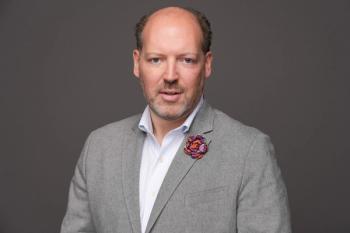
- Psychiatric Times Vol 26 No 2
- Volume 26
- Issue 2
“What Do You Mean, I Don’t Have Schizophrenia?”
My first job after residency involved working at a large Veterans Affairs hospital in an outpatient dual diagnosis treatment program that focused on the comorbidity of schizophrenia and cocaine dependence. Having recently completed a chief resident position at the same hospital’s inpatient unit that focused on schizophrenia without substance abuse, I was struck by how “unschizophrenic” my new patients were. They were organized and social. Their psychotic symptoms were usually limited to claims of “hearing voices,” for which insight was intact and pharmacotherapy was readily requested.
My first job after residency involved working at a large Veterans Affairs hospital in an outpatient dual diagnosis treatment program that focused on the comorbidity of schizophrenia and cocaine dependence. Having recently completed a chief resident position at the same hospital’s inpatient unit that focused on schizophrenia without substance abuse, I was struck by how “unschizophrenic” my new patients were. They were organized and social. Their psychotic symptoms were usually limited to claims of “hearing voices,” for which insight was intact and pharmacotherapy was readily requested.
When I interviewed these patients and asked what ailed them, they would often simply reply, “schizophrenia– bipolar disorder.” When I pressed for details (taking care not to ask leading questions but instead to encourage the patient to describe his or her own subjective experience), I often received a terse and sometimes hostile retort to the effect that, “it’s all there in the chart.” It quickly became clear that patients thought of me as a prescriber of medications and that the expected transaction would involve a rote recitation of a few brief symptoms on their part-“sleep,” “voices,” “paranoia,” “nerves”-in exchange for a flourish of my pen on a prescription pad. When I made the mistake of suggesting that a patient might not have schizophrenia, the reaction was often one of outrage.
“What do you mean, I don’t have schizophrenia? Are you trying to say I’m lying?”
I often wondered if oncologists had similar experiences . . .
“Mr Jones, we’ve rerun the tests and carefully reviewed your history, and we’ve determined that you don’t have cancer after all. Therefore, you don’t need these medications anymore.”
“What do you mean I don’t have cancer!? The other doctor says I have cancer! It’s all in my chart. How dare you say that!?”
Of course, in my patients’ world and in the wake of the Contract With America Advancement Act of 1996- a diagnosis of schizophrenia is one of the best ways to gain access to a disability income and other social services that are unavailable for those who “only” have a substance use disorder.1 So, despite my best intentions, my patients were far from relieved when I “took away” their schizophrenia diagnosis or an antipsychotic medication. On the contrary, their very existence was threatened.
Viewed from this perspective, I realized that malingering, if present, was often iatrogenic-incentivized by increasingly restrictive criteria for disability incomes or access to care that characterize addiction as a lifestyle choice. I’d find myself thinking of Jean Valjean: given existing conditions, who wouldn’t steal the loaf of bread as a simple act of survival? Furthermore, as my aging patients headed into the “generativity vs stagnation” phase of their lives and surveyed the rocky landscape of the preceding 30- some years, it was no doubt more comforting to think that their lives had been torn apart because of something external, like schizophrenia or “voices,” rather than their “own” addictive behaviors.
Psychosis: culprit or scapegoat?
In the wake of 9/11, regular reports of suicide bombings in the Middle East, and the spate of school or public shootings that have occurred in this country in recent years, it is fascinating to read the language that emerges in newspaper headlines. “Fanatics” and “psychopaths” embark on shooting “sprees” and “rampages.” Evidence of “strange,” “odd,” or “erratic” behavior, “paranoia,” and “psychological treatment” is uncovered. Suicide notes or other writings contain “bizarre diatribes” and “delusional rants.” The media and public often seem to want to find a culprit in psychosis, and armchair speculation about whether schizophrenia might somehow be responsible inevitably follows. How else can we explain shocking, heinous, and antisocial acts of violence that strike fear in our hearts? It comforts and reassures us that psychosis is at the root of these horrifying acts and that “normal” people did not commit them. We fantasize that if we can only better recognize and sequester the mentally ill, then we can keep our streets, schools, and countries safe
As with my dual diagnosis patients, I’m often quick to play the diagnostic skeptic. While I firmly reject the Szaszian notion that mental illness does not exist, I am ever wary of our quickness to equate deviant behavior- even when shockingly violent- with mental illness. Relegating such behavior to a tidy package with a schizophrenia/schizophrenic label renders moot any consideration of psychodynamic issues or society’s role in creating the conditions that might give rise to such behavior. It ignores the possibility that “bad men do what good men dream”2 or that someone “normal” (albeit with a dysfunctional personality trait or 2) like you or me, our family members, or our neighbors, might one day do the unspeakable.
We are likewise simultaneously amused, appalled, and obsessed with the provocative, chaotic, and sometimes suicidal behavior of our society’s celebrities. Here the cast of diagnostic offerings typically includes cluster B personality disorder, drug abuse, and bipolar spectrum disorder, depending on how we as individuals think of the celebrity in question. Yet again, I find myself doubting tabloid claims of real mental illness and prefer to attribute bad behavior to spoiled narcissism or histrionic acting out. Clearly, there are countertransference issues to be considered when making such diagnostic speculations.
What diagnostic labels say about free will
What is striking in these cases of substance abuse, sociopathy, and celebrityis the degree to which diagnostic labels have very different implications about causality, free will, and responsibility, and how each has a reciprocal relationship with our level of sympathy or empathy. And yet despite this, the issue of free will in psychiatry seems almost completely neglected outside of forensics. There now seem to be 3 etiological categories of mental disorder.
Biological Disorders that (like diseases) people “get” or to which they fall hapless victim. Such victims are robbed of free will and are excused of responsibility. Some brandish their diagnostic labels-schizophrenia, bipolar disorder, posttraumatic stress disorder-like badges of honor, as if to say, “look what I’ve been through.” In response, we sympathize, we want to help, and we feel that assistance and treatment are well-deserved.
Substance use disorders to which people can fall victim-through at least some fault of their own. In general, our society still regards addiction as a choice and a behavior for which free will is intact, even though “willpower” might be weak and the “addict” finds his life ruined by poor choices and lack of resolve. We still want to help those affected-but only to a point. We want the patient to assume responsibility, to take some blame, to pay for mistakes, and to bear some shame.
Personality disorders. People don’t “get” these-they are them. The assumption of free will is strongest in this category. The character-disordered person wants to behave this way, does not care what he does to others, and does not want to change. We want to help in theory, but we doubt that change is possible, and we are quick to malign the behavior. We often resort to an Axis II diagnosis when our attempts at therapy fail, and we shift the blame from ourselves to our patients.
As DSM is revamped for its fifth incarnation, it is time that we acknowledge, examine, and debate this unequal distribution of free will across psychiatric diagnoses. And with the likely adoption of spectrum models of mental illness in DSM in which expanding borders encroach on what might have previously been considered a normal variation, we must be increasingly mindful of the role of countertransference in the assignment of diagnostic labels and the reciprocal impact of diagnosis on countertransference.
References:
1. Pierre JM, Wirshing DA, Wirshing WC. “Iatrogenic Malingering” in VA substance abuse treatment. Psychiatr Serv. 2003;54:253-254.
2. Simon RI. Bad men do what good men dream: a forensic psychiatrist illuminates the darker side of human behavior. In: Simon RI, ed. Serial Sexual Killers, Your Life for Their Orgasm.Washington, DC:American Psychiatric Press; 1996:279-312.
Articles in this issue
almost 17 years ago
One More Thing to Worry Aboutalmost 17 years ago
New Research Examines Genetics Behind ADHDalmost 17 years ago
Brain Rulesalmost 17 years ago
Achieving Remission in Generalized Anxiety Disorderalmost 17 years ago
SSRIs as Antihypertensives in Patients With Autonomic Panic Disorderalmost 17 years ago
Can Anticonvulsants Help Patients With Anxiety Disorders?almost 17 years ago
The Intricacies of Diagnosis and Treatmentalmost 17 years ago
Preventing Prescription Opioid Abuse: New Formulations-But Who Will Benefit?almost 17 years ago
Kernberg’s Borderline Conditions and Pathological NarcissismNewsletter
Receive trusted psychiatric news, expert analysis, and clinical insights — subscribe today to support your practice and your patients.














